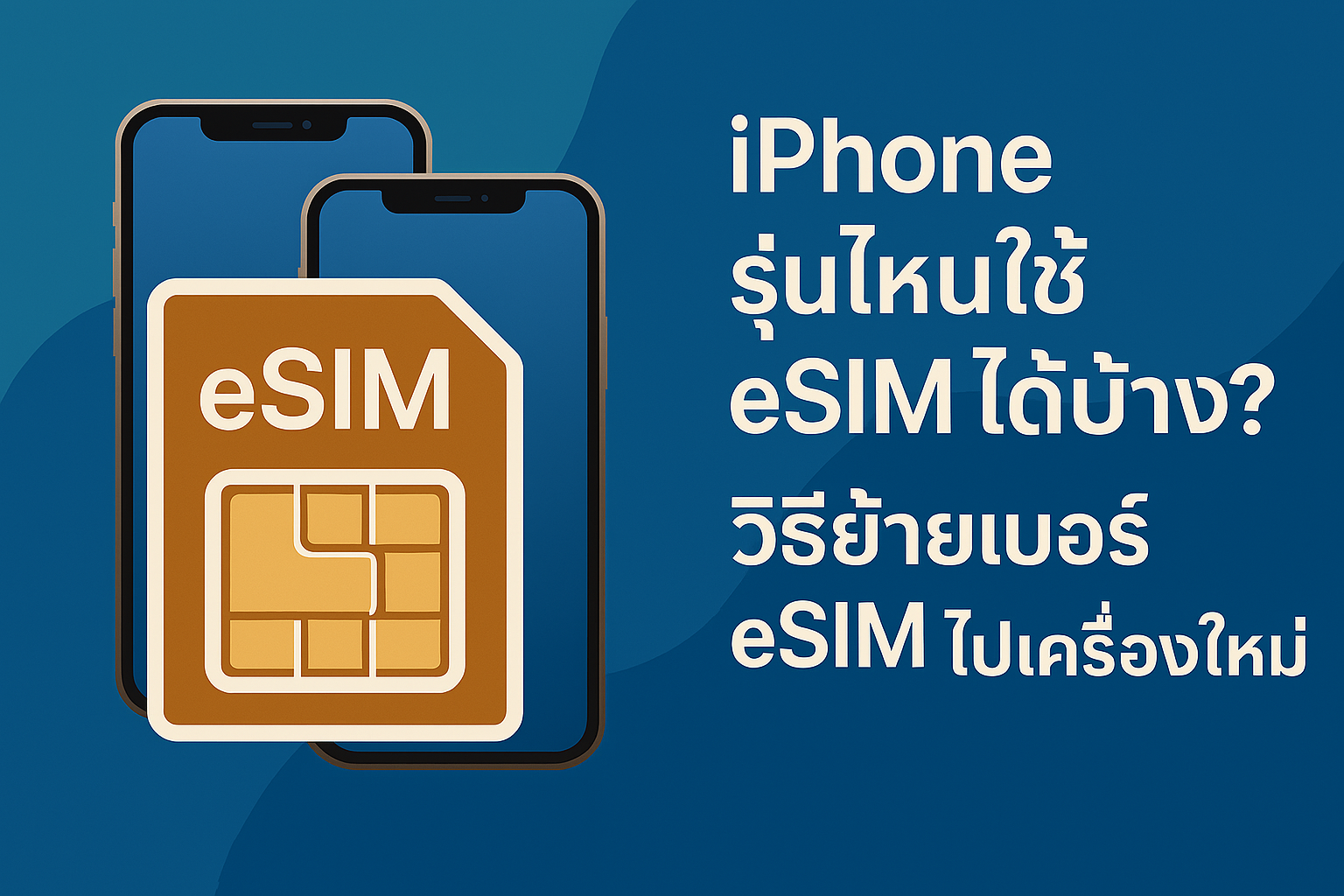Which iPhone Models Support eSIM? And How to Transfer Your eSIM Number to a New Device?
eSIM (embedded SIM) technology has revolutionized how we use mobile phones, especially for those who need multiple numbers or travel frequently. No more constantly swapping physical SIM cards! For iPhone users, eSIM support has been around for several generations. But does your iPhone support it, and if so, how do you transfer your eSIM number to a new device? This article has the answers for you, complete with SEO tips and a slug to ensure this information reaches as many people as possible.
iPhone Models That Support eSIM
Apple began integrating eSIM technology into iPhones in 2018. The models that can use eSIM include:
eSIM (embedded SIM) technology has revolutionized how we use mobile phones, especially for those who need multiple numbers or travel frequently. No more constantly swapping physical SIM cards! For iPhone users, eSIM support has been around for several generations. But does your iPhone support it, and if so, how do you transfer your eSIM number to a new device? This article has the answers for you, complete with SEO tips and a slug to ensure this information reaches as many people as possible.
iPhone Models That Support eSIM
Apple began integrating eSIM technology into iPhones in 2018. The models that can use eSIM include:
- iPhone XS, iPhone XS Max, iPhone XR and all newer models (including iPhone 11 series, iPhone 12 series, iPhone 13 series, iPhone 14 series, and iPhone 15 series).
- iPhone SE (2nd and 3rd generation).
Important Notes:
- iPhones sold in mainland China, Hong Kong, and Macao: Generally, these iPhones do not have eSIM but instead feature a dual SIM tray (Dual SIM with two physical SIM card slots). However, some models sold in Hong Kong and Macao might support eSIM. Please check the device specifications carefully.
- iPhone 14 series and iPhone 15 series sold in the United States: These iPhone models do not have a physical SIM card tray at all and only support eSIM.
Therefore, before buying a used iPhone or importing one from abroad, you should always verify that the device supports eSIM in the region where you intend to use it.
Why is eSIM Appealing?
Why is eSIM Appealing?
- Convenience: No need to carry physical SIM cards or constantly swap them when traveling internationally.
- Easier Dual SIM Use: You can have multiple numbers on one device, whether for personal use, work, or international travel, without needing two physical SIM cards.
- More Secure: If your phone is lost, the eSIM is embedded within the device, making it harder to remove than a physical SIM card.
How to Transfer Your eSIM Number to a New iPhone
Transferring an eSIM number to a new iPhone is easier than you might think, with several methods available depending on your iOS version and carrier:
1. Transfer eSIM using "Quick Transfer" or "Cellular Transfer."
This is the easiest and recommended method when you're setting up a new iPhone. Both the old and new devices need to be near each other and connected to Wi-Fi:
- During new iPhone setup: When you reach the "Set Up Cellular" step, you'll see an option to transfer your eSIM from your old iPhone.
- After setting up your new iPhone: Go to Settings > Cellular > Add Cellular Plan. You might then see an option for "Transfer From Another iPhone." Select the eSIM number you wish to transfer and follow the on-screen instructions.
Caution: This method requires the eSIM to be released from the old device first. If the transfer fails, you might need to contact your carrier.
2. Transfer eSIM by Scanning a QR Code (if provided by your carrier).
Some carriers provide a QR Code for eSIM activation. If you need to transfer your number:
- Contact your mobile carrier to request a new QR Code for your eSIM (there might be a fee or identity verification process).
- On your new iPhone, go to Settings > Cellular > Add Cellular Plan.
- Select "Use QR Code" and scan the QR Code you received.
3. Transfer eSIM using your Carrier's App (if available).
Some mobile carriers have their own apps that support eSIM management. You might be able to transfer your number directly through the app:
- Download and install your carrier's app on your new iPhone.
- Log in and follow the in-app instructions to activate or transfer your eSIM.
4. Contact Your Mobile Carrier Directly.
If the methods above don't work, or you're unsure how to proceed, contacting your carrier's Call Center or service center is the most reliable method. They will be able to assist you with the eSIM transfer correctly and securely.
Conclusion
eSIM technology offers significant convenience and flexibility for iPhone users, with almost all newer iPhone models now supporting it. Transferring an eSIM number to a new device is straightforward, whether through direct device transfer, QR code scanning, or your carrier's app. If you're ever unsure, always contact your mobile carrier for assistance to ensure a smooth and uninterrupted experience with your iPhone and eSIM.
Conclusion
eSIM technology offers significant convenience and flexibility for iPhone users, with almost all newer iPhone models now supporting it. Transferring an eSIM number to a new device is straightforward, whether through direct device transfer, QR code scanning, or your carrier's app. If you're ever unsure, always contact your mobile carrier for assistance to ensure a smooth and uninterrupted experience with your iPhone and eSIM.

